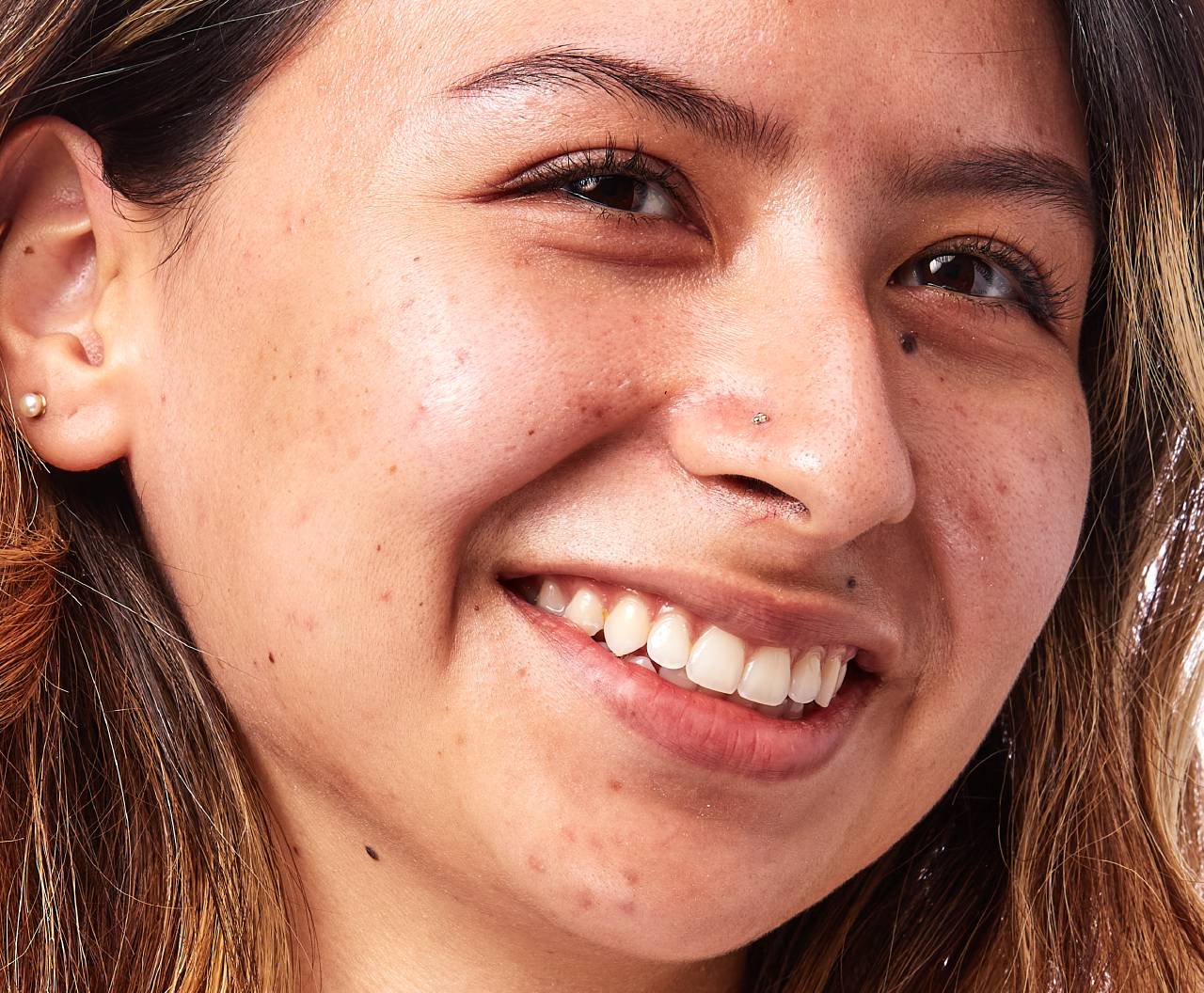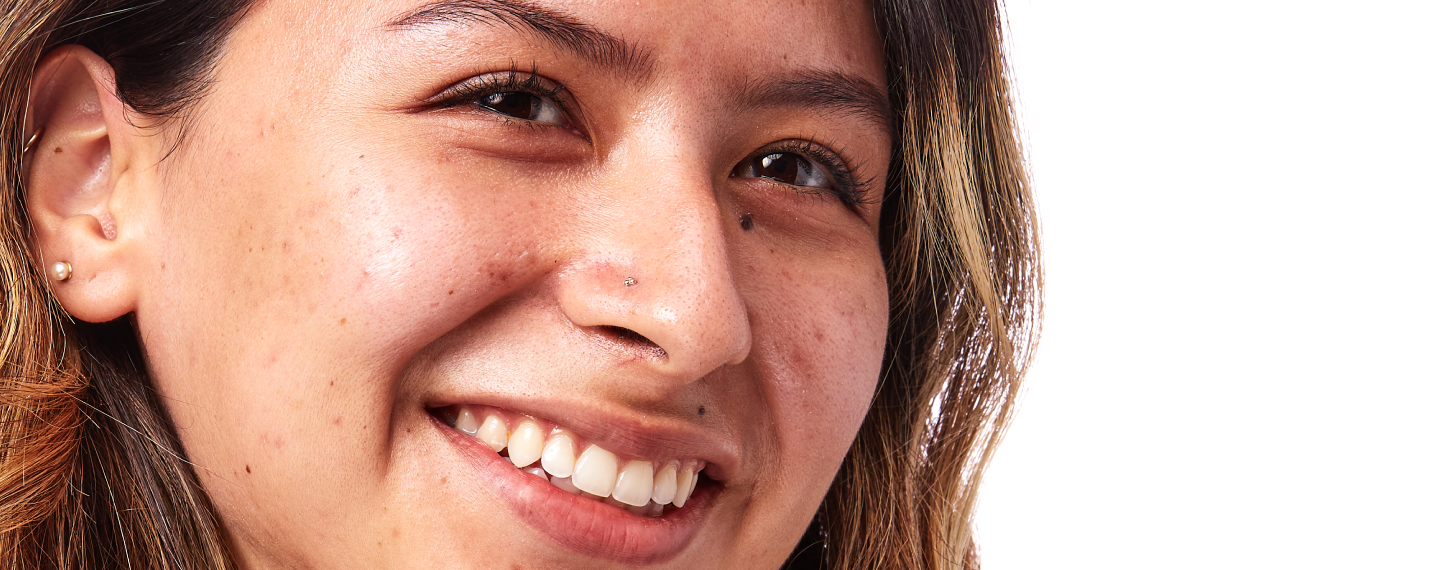Education
Best facial treatment for acne: 5 things to try


SHARE
Education
Best facial treatment for acne: 5 things to try
Medically reviewed by Katelyn Hagerty FNP
Written by Apostrophe Team
Last updated 11/3/2024
Whether you’re suffering from acne as a teen or an adult, the problem of facial breakouts and pimples is the same: blemishes can make us all feel self-conscious and, over time, affect our self-esteem.
Acne is a complicated problem with a multitude of solutions, with some more effective than others.
But the one thing many of the best acne treatments out there have in common: they interact with the problem directly, such as topical treatments.
We’re not saying other therapies aren’t helpful — in fact, some of them can make or break your acne fight.
But some of the best treatments out there are applied directly to the problem skin before and during breakouts.
What Is Acne?
As simply as we can put it, acne is caused by clogged pores, which can happen for a variety of different reasons.
Essentially, a combination of three things can turn a normally functioning pore into an acne hot spot.
Those three things are the oil your skin produces, the dead and dry cells sloughing off of your skin, your hydration level, and the population of naturally occurring bacteria living within your pores.
There are different kinds of acne, which occur depending on which element is most out of whack.
A build-up of cells is different from a clogged pore with thriving bacteria. The fact is that different kinds of blemishes have different severity levels that might require different solutions.
You can learn more about them at our guide to the types of acne.
But the long and short of it is that you have to unclog, reduce bacteria, and get that pore back to full health.
As a treatment style, topicals are really effective for skin issues. We know facial treatments might present some concerns — the worst thing that can happen is further damage from a chemical burn or allergic reaction to make things look and feel even worse.
But there are a lot of safe and effective facial treatments out there.
Facial and Topical Treatments for Acne
Topical treatments come with advantages and disadvantages. The fact that they’re applied directly to the skin makes them both more effective and potentially riskier with regard to side effects.
The journal Molecules published a comprehensive list of acne treatments in 2016, including a section on topical facial treatments that showed results.
They found the following list of treatments to be effective: retinoids, antibiotics, salicylic acid, alpha hydroxy acids, benzoyl peroxide, corticosteroids, and several other less common treatments, like antiseptics, B vitamins, sulfur, and hydrogen peroxide.
Here’s how it all breaks down:
Retinoids
Topical retinoids can be used for inflammatory acne, as a maintenance treatment, or to help reduce more severe acne.
Retinoids can also “repair the scarring and hyperpigmentation of skin.” They’re also largely considered a first-line treatment for most types of acne.
One of the most popular retinoids is tretinoin, which is a form of vitamin A. Tretinoin is effective for reducing dead skin cells that may block things up, and has been used safely for decades.

PRESCRIPTION TRETINOIN
Target acne, dark spots, and signs of aging with this science-backed ingredient.
Tretinoin offers the double benefit of removing the dry, dead outer layer of your skin and, according to studies, boosting the younger skin’s growth underneath.
This can get your skin running fresh, healthy, and regular again.
Tretinoin has also been shown to aid in collagen synthesis — which is a nice benefit if you’re concerned about signs of aging.
Antibiotics
Topical antibiotics are generally used for less intense outbreaks of inflammatory acne.
They’re used to undermine the acne bacterium itself, and when applied to the skin, they can help reduce the “stimulus for inflammation.”
Salicylic Acid
Salicylic acid is effective both as an anti-inflammatory and at reducing the buildup of dead skin cells that can contribute to blockages and acne outbreaks.
It’s also an effective antibacterial and antifungal ingredients. It’s available in over-the-counter products.
Hydroxy Acids
Alpha hydroxy acids are commonly found in many over-the-counter skin care products. They work by exfoliating the top layer of skin to remove dead skin cells. Alpha hydroxy acids are also used in chemical peels by estheticians or in dermatology offices. However, according to some studies, it’s better to consider chemical peels a complementary treatment instead of your first line of defense.
Benzoyl Peroxide
A common acne-fighting ingredient, benzoyl peroxide works as a peel and anti-bacterial treatment. It reduces bacteria by releasing free radical oxygen, which “degrades the bacterial proteins.”
Benzoyl peroxide is effective for mild to moderate acne and is best used at a different schedule than retinoids because the two can make each other less effective. Side effects may include burning, dryness, peeling, or stinging.
Other Ways to Treat Acne
There are other ways to treat acne of course, including addressing issues like skin hydration.
For this, many women look to herbal remedies — but we recommend avoiding skincare DIYs.
There are natural ingredients like aloe vera that are used in skincare, but they are formulated to be used on the skin. For instance, topical hyaluronic acid is a popular skincare ingredient that can also be naturally found in your skin. It has been shown to help your skin retain skin moisture many times over its own mass.
And besides moisture, your lifestyle may be causing some of these problems. In addition to poor hydration, a high glycemic diet and general stress have also both been shown to increase the risk of acne — not to mention diabetes and other serious conditions.
Take your health seriously: exercise and maintain a healthy diet and your body will have better tools and supplies for fighting acne (as well as a seemingly innumerable amount of other health issues and medical conditions).
What to Do Next to Fight Acne
Acne is a complicated problem, and each person’s acne can be as unique of a problem to solve as their fingerprints. As a result, this isn’t a DIY problem.
A healthcare provider should really be included in the acne-fighting process. They will be able to give you recommendations based on your acne type and skin type that will be more effective than the trial-and-error process of grabbing over-the-counter solutions yourself. If you are looking to get connected with an expert derm team, get started at Apostrophe.
5 Sources
Jegasothy, S. M., Zabolotniaia, V., & Bielfeldt, S. (2014). Efficacy of a New Topical Nano-hyaluronic Acid in Humans. The Journal of clinical and aesthetic dermatology, 7(3), 27–29. Retrieved from https://www.ncbi.nlm.nih.gov/pmc/articles/PMC3970829/
Rodan, K., Fields, K., Majewski, G., & Falla, T. (2016). Skincare Bootcamp: The Evolving Role of Skincare. Plastic and reconstructive surgery. Global open, 4(12 Suppl Anatomy and Safety in Cosmetic Medicine: Cosmetic Bootcamp), e1152. https://www.ncbi.nlm.nih.gov/pmc/articles/PMC5172479/
Fox, L., Csongradi, C., Aucamp, M., du Plessis, J., & Gerber, M. (2016). Treatment Modalities for Acne. Molecules (Basel, Switzerland), 21(8), 1063. https://www.ncbi.nlm.nih.gov/pmc/articles/PMC6273829/
Yoham AL, Casadesus D. Tretinoin. updated 2020 dec 5. In: StatPearls internet. Treasure Island (FL): StatPearls Publishing; 2021 Jan-. Available from: https://www.ncbi.nlm.nih.gov/books/NBK557478/
Cleveland Clinic. (n.d.). Acne. https://my.clevelandclinic.org/health/diseases/12233-acne
Shop this post

Tretinoin
Like what you just read? Sign up for our email list to get the scoop on skincare science delivered straight to your inbox.

Deep Dives
A dermatologist shares his thoughts on the recent studies about benzoyl peroxide and benzene.
Read More
Education
What is milia?
What is milia? Today, we’re jumping into one type of bump that you may have heard about most commonly in infants — milia.
Read More
Education
Best moisturizer for acne-prone skin
If you have combination acne-prone skin, figuring out which moisturizer is best for your skin might be tough. In this guide, we break down the best moisturizer for combination, acne-prone skin.
Read More
